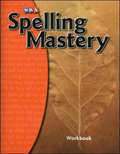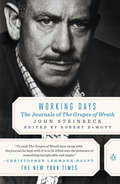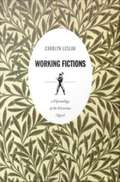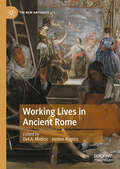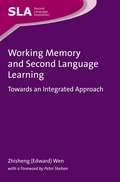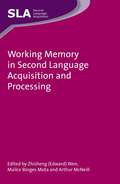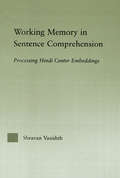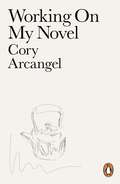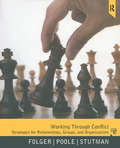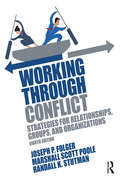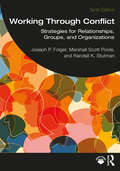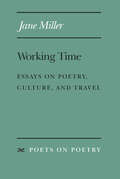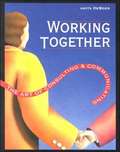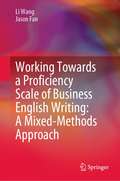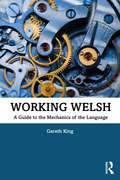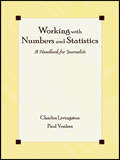- Table View
- List View
Workbook for Living Together
by Pathway PublishersLanguage Arts Workbook for Living Together Grade 5
Workbook for More Busy Times
by Pathway PublishersA language arts workbook designed for second graders.
Workbook for More Days Go By (Grade #1)
by Pathway PublishersThis workbook has been prepared especially for first graders in Amish parochial schools, to accompany the first reader, MORE DAYS GO BY- Not only was the book prepared with the children in mind, their teacher was also considered. The exercises were designed to train the children to work independently, with a minimum of teacher assistance.
Workbook for Step By Step: Grade 6 (Revised Edition)
by Pathway PublishersThis workbook has been prepared especially for sixth graders in parochial schools, to be used with the textbook STEP BY STEP.
Workbook, Level A [Grade 1]
by Siegfried Engelmann Robert Dixon Mary Meier BauerNIMAC-sourced textbook
Working Days
by John SteinbeckJohn Steinbeck wrote The Grapes of Wrath during an astonishing burst of activity between June and October of 1938. Throughout the time he was creating his greatest work, Steinbeck faithfully kept a journal revealing his arduous journey toward its completion. The journal, like the novel it chronicles, tells a tale of dramatic proportions#151;of dogged determination and inspiration, yet also of paranoia, self-doubt, and obstacles. It records in intimate detail the conception and genesis of The Grapes of Wrath and its huge though controversial success. It is a unique and penetrating portrait of an emblematic American writer creating an essential American masterpiece.
Working Dogs
by Jessica QuiltyThe fun and excitement of English and Language Arts learning continues in Grade 2 of Reading Street. This comprehensive and dynamic curriculum for homeschooling is geared toward young children who have some foundational English and Language Arts knowledge and are ready to strengthen their skills. Comprised of engaging activities, challenging content and weekly quizzes, Reading Street: Grade 2 is the next step in your child's path toward becoming a lifelong learner and reader. As with all Reading Street products, the Grade 2 system is formatted to help students meet certain age-appropriate goals. After completing this English and Language Arts homeschool program, your child should be able to: Read and comprehend two-syllable words. Identify common prefixes (such as pre-, un-, or re-) and suffixes (such as -able, -ad and -er). Correct mistakes made when reading out loud. Read books with two or more chapters. Understand the structure of stores (i. e. beginning, middle and end). Start selecting reading materials based on his/her own interests. Identify the "who," "what," "when," "where," "why" and "how" of the text. While the goals of second Grade English and Language Arts are numerous, Reading Street will help you craft engrossing lessons. Your child will garner important English and Language Arts skills while completing a workbook, reading stories and poems, and taking assessments. Planning these lessons will be easier than ever, as all Reading Street systems are broken down into weekly Big Ideas. All the work your child does on a given week is formulated around that single concept for an organized and challenging curriculum. With six easy-to-follow units, Reading Street: Grade 2 is the perfect tool for homeschooling parents. Your child will enjoy the reading selections and activities, and you'll love to see your student growing into a knowledgeable individual. We're confident that this product is the right one for you. For more information on the specific materials found in Grade 2 of Reading Street, check out the Features and Benefits page.
Working Fictions: A Genealogy of the Victorian Novel
by Carolyn LesjakWorking Fictions takes as its point of departure the common and painful truth that the vast majority of human beings toil for a wage and rarely for their own enjoyment or satisfaction. In this striking reconceptualization of Victorian literary history, Carolyn Lesjak interrogates the relationship between labor and pleasure, two concepts that were central to the Victorian imagination and the literary output of the era. Through the creation of a new genealogy of the "labor novel," Lesjak challenges the prevailing assumption about the portrayal of work in Victorian fiction, namely that it disappears with the fall from prominence of the industrial novel. She proposes that the "problematic of labor" persists throughout the nineteenth century and continues to animate texts as diverse as Elizabeth Gaskell's Mary Barton, George Eliot's Felix Holt and Daniel Deronda, Charles Dickens's Great Expectations, and the essays and literary work of William Morris and Oscar Wilde. Lesjak demonstrates how the ideological work of the literature of the Victorian era, the "golden age of the novel," revolved around separating the domains of labor and pleasure and emphasizing the latter as the proper realm of literary representation. She reveals how the utopian works of Morris and Wilde grapple with this divide and attempt to imagine new relationships between work and pleasure, relationships that might enable a future in which work is not the antithesis of pleasure. In Working Fictions, Lesjak argues for the contemporary relevance of the "labor novel," suggesting that within its pages lie resources with which to confront the gulf between work and pleasure that continues to characterize our world today.
Working Hard to Help (Reach Into Phonics Ser.)
by Deborah J. Short Mark Gaines Olivia LeeNIMAC-sourced textbook
Working Lives in Ancient Rome (The New Antiquity)
by Del A. Maticic Jordan RogersThis book sheds new light on labor and laboring in the Roman world. It starts with the individual laborer and works up, emphasizing their agency in navigating, transforming, and transcending the systems and structures around them. Taking advantage of the broad applicability of notions of work and labor to human lives at every rung of Roman society, the volume also offers numerous overlapping frameworks for thinking comparatively between many different kinds of work, whether in agriculture, craft, trade, politics, art, or literature. The book is organized around the ‘typical’ work-life experience of the modern 9-to-5 and provides a means of thinking in a rigorous way about how the working lives of scholars of Rome are caught up in ancient discourse and practices.
Working Memory and Second Language Learning: Towards an Integrated Approach
by Zhisheng Edward WenThis book introduces an approach to understanding and measuring working memory components and functions in second language learning, processing and development. It presents comprehensive, thorough and updated reviews of relevant literatures from cognitive sciences and applied linguistics. Drawing on multidisciplinary research, the book advocates a conceptual framework for integrating working memory theories with second language acquisition theories. An innovative theoretical model is also presented, which illuminates research studies investigating the distinctive roles of phonological and executive working memory as they relate to specific L2 learning domains, skills and processes. Theoretical and methodological implications of this integrative perspective are further elaborated and discussed within the specific realms of L2 task-based performance and language aptitude research.
Working Memory in Second Language Acquisition and Processing
by Zhisheng Edward Wen Mailce Borges MotaThis unique volume offers a comprehensive discussion of essential theoretical and methodological issues concerning the pivotal role of working memory in second language learning and processing. The collection opens with a foreword and introductory theoretical chapters written by leading figures in the field of cognitive psychology. Following these are three research sections containing chapters providing original data and innovative insights into the dynamic and complex relationships between working memory and specific areas of second language processing, instruction, performance and development. Each section concludes with a commentary which is written by a noted SLA researcher and which charts the course for future research. This book provides a fascinating collection of perspectives on the relationship between working memory and second language learning and will appeal to those interested in the integration of cognitive psychology with SLA research.
Working Memory in Sentence Comprehension: Processing Hindi Center Embeddings
by Shravan VasishthThe first-ever investigation of sentence processing in Hindi, Working Memory in Sentence Comprehension studies the predictions of three existing, wide-coverage sentence processing models. In experiments that apply these models to Hindi, Shravan Vasishth develops a new sentence processing model that builds on existing theories and overcomes their empirical problems. Advancing the understanding of human parsing processes, this book is a landmark in cross-linguistic research, presenting a challenging set of sentence processing facts that will impact future theories.
Working On My Novel
by Cory ArcangelWhat does it feel like to try and create something new? How is it possible to find a space for the demands of writing a novel in a world of instant communication?Working on My Novel is about the act of creation and the gap between the different ways we express ourselves today. Exploring the extremes of making art, from satisfaction and even euphoria to those days or nights when nothing will come, it's the story of what it means to be a creative person, and why we keep on trying.
Working Through Conflict: Strategies for Relationships, Groups, and Organizations
by Marshall Scott Poole Joseph Folger Randall K. StutmanUpdated in its 7th edition, Working Through Conflict provides an introduction to conflict and conflict management that is firmly grounded in current theory, research, and practice, covering the whole range of conflict settings (interpersonal, group, and organizational). Encompassing a broad spectrum of theoretical perspectives, the text includes an abundance of real life case studies that illustrate key concepts and help students learn how to apply theory. The book's emphasis on application of concepts makes it highly accessible to students, while expanding their understanding of both conflict theory and practical skills.An introduction to social science research and theory on conflict
Working Through Conflict: Strategies for Relationships, Groups, and Organizations
by Marshall Scott Poole Joseph Folger Randall K. StutmanNow in its eighth edition, Working Through Conflict provides an introduction to conflict and conflict management that is firmly grounded in current theory, research, and practice, covering a range of conflict settings (interpersonal, group, and organizational). The text includes an abundance of real life case studies that encompass a spectrum of theoretical perspectives. Its emphasis on application makes it highly accessible to students, while expanding their comprehension of conflict theory and practical skills. This new edition features a wealth of up-to-date research and case examples, suggested readings and video resources, and integrated questions for review and discussion.
Working Through Conflict: Strategies for Relationships, Groups, and Organizations
by Marshall Scott Poole Randall K. Stutman Joseph P. FolgerEncompassing theory, research, and practice, this tenth edition provides an introduction to conflict communication and conflict management. This text features real-life case studies across a range of theoretical perspectives and conflict settings, including interpersonal, group, and organizational. Approachably written for students and with an eye to application, the book teaches conflict theory in the context of practical skills. This edition features new sections and references on recognizing intractable conflict and managing online conflict, a new exhibit on conflict escalation, and a new section on interpersonal goals, as well as an updated list of powerful ways to resolve and manage conflict.This textbook is ideally suited to undergraduate or graduate courses on conflict communication within communication studies, business and management, political science, and counseling programs. An Instructor’s Manual, including a sample syllabus, written and oral assignments, cases, exercises, video and online resources, sections from previous editions, and test questions is available at www.routledge.com/9781032489186.
Working Time: Essays on Poetry, Culture, and Travel (Poets On Poetry)
by Jane MillerWorking Time collects essays by prize-winning poet Jane Miller on the subjects of poetry, travel, and culture. The discussions of contemporary poetry begin with excursions into geography, where language literally “takes shape.” Each essay is set in a landscape, where the notion of travel as a poetic experience, from the American Southwest to places in Italy, France, and Spain, is explored. The essays consider notions of time, duration, narrative, documentary, and history in American poetry, and view poetry in the light of developments in feminism, postmodern theory, and contemporary poetic practice. In addition to poetry, Miller investigates a range of cultural products and art forms, including film, video, photography, painting, sculpture, music, and the Madonna phenomenon.
Working Together: The Art of Consulting and Communicating
by Anita DeBoerProductive learning occurs when educators work together to create new visions, analyze important issues, and evaluate outcomes. This book explores how educators can effectively engage in peer problem solving, focusing on three aspects of the process: (1) models for consulting with colleagues in problem solving; (2) communication skills necessary for consulting; and (3) how to collaborate with colleagues with differing interpersonal styles. Within these three main areas, the essential skills that educators need for working together, such as trust building, listening, facilitating, collaborating, questioning, communication, and peer problem solving are illustrated through interactive strategies designed to empower educators to become proactive, rather than reactive with conflict.
Working Towards a Proficiency Scale of Business English Writing: A Mixed-Methods Approach
by Li Wang Jason FanThis book presents an empirical study to develop and validate a proficiency scale of business English writing in the Chinese tertiary context. Through a mixture of intuitive, quantitative and qualitative methods, the book demonstrates how a pool of descriptors are collectively formulated, statistically calibrated and meticulously validated for the establishment of a proficiency scale of business English writing. The writing scale differs in significant ways from the existing language scales, most of which were constructed in English as L1 or L2 contexts and applied to English for General Purposes (EGP) domains. This book also provides important insights into the construct of business English writing as well as the methods for English for Specific Purposes (ESP) proficiency scale development and validation. It is of particular interest to those who work in the area of ESP teaching and assessment.
Working Welsh: A Guide to the Mechanics of the Language
by Gareth KingWorking Welsh offers a new approach to building up and consolidating learners’ fluency and confidence, focusing on the mechanics – the words and phrases that build and drive sentences and make them fit together. 200 Welsh words and phrases are listed alphabetically, explained in clear and accessible language, and given ample exemplification to illustrate their meaning and use. All instances of mutation are marked with the usual typographic signs, and cross-references are given throughout to related entries. Grammatical appendices and an English index round off the manual. Working Welsh is an innovative resource for post-beginner students wishing to explore and master the principal discourse-drivers in modern spoken and standard Welsh.
Working With Numbers and Statistics: A Handbook for Journalists
by Charles Livingston Paul S. VoakesWorking With Numbers and Statistics: A Handbook for Journalists will bolster math skills and improve math confidence for journalists at all skill levels. Authors Charles Livingston and Paul Voakes developed this resource book to improve journalistic writing and reporting, enabling journalists to:*make accurate, reliable computations, which in turn enables one to make relevant comparisons, put facts into perspective, and lend important context to stories;*recognize inaccurate presentations, whether willfully spun or just carelessly relayed;*ask appropriate questions about numerical matters;*translate complicated numbers for viewers and readers in ways they can readily understand;*understand computer-assisted reporting; and*write livelier, more precise pieces through the use of numbers.The math is presented in a journalistic context throughout, enabling readers to see how the procedures will come into play in their work.Working With Numbers and Statistics is designed as a reference work for journalism students developing their writing and reporting skills. It will also serve professionals as a useful tool to improve their understanding and use of numbers in news stories.
Working With Words Grade 5: Vocabulary Workbook
by PathwayThis course contains 42 lessons, 2 pages per lesson, with lessons divided into 3 sections: A) match 20 words with definitions; B) use word list to fill in the blank; C) various exercises. Every 4th lesson includes a review section instead of section C. Every 8th lesson includes a test after the review. There are a total of 5 tests, found in the back of the book, which may be cut out and reserved.

